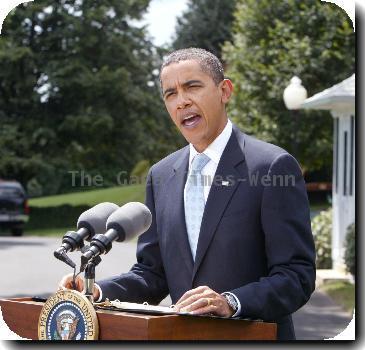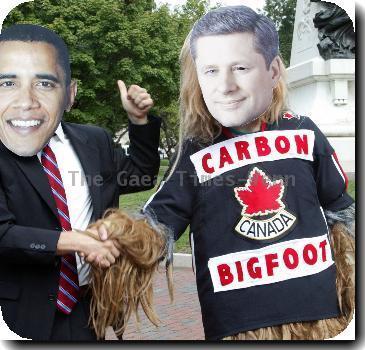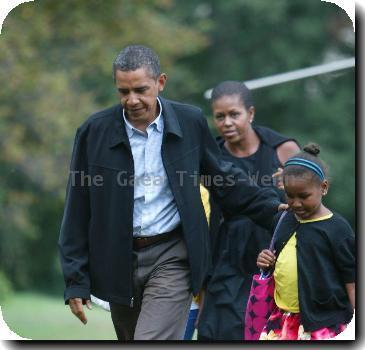Economy grows again in 3rd quarter, best showing in 2 years signals end of recession
By APThursday, October 29, 2009
Economy grows in 3Q, signals end of recession
WASHINGTON — The economy grew at a 3.5 percent pace in the third quarter, the best showing in two years, fueled by government-supported spending on cars and homes. It’s the strongest signal yet that the economy has entered a new, though fragile, phase of recovery and that the worst recession since the 1930s has ended.
Going forward, many analysts expect the pace of the budding recovery to be plodding due to rising unemployment and continuing difficulties by both consumers and businesses to secure loans.
“This welcome milestone is just another step, and we still have a long road to travel until the economy is fully recovered,” said Christina Romer, President Barack Obama’s chief economist. “It will take sustained, robust … growth to bring the unemployment rate down substantially. Such a decline in unemployment is, of course, what we are all working to achieve.”
The much-awaited turnaround reported Thursday by the Commerce Department ended the streak of four straight quarters of contracting economic activity, the first time that’s happened on records dating to 1947.
It also marked the first increase since the spring of 2008, when the economy experienced a short-lived uptick in growth.
On Wall Street, the news lifted stocks. The Dow Jones industrials gained nearly 110 points in midday trading and broader indices also rose.
The third-quarter’s performance — the strongest since right before the country fell into recession in December 2007 — was slightly better than the 3.3 percent growth rate economists expected.
Armed with cash from government support programs, consumers led the rebound in the third quarter, snapping up cars and homes.
Consumer spending on big-ticket manufactured goods soared at an annualized rate of 22.3 percent in the third quarter, the most since the end of 2001. The jump largely reflected car purchases spurred by the government’s Cash for Clunkers program that offered a rebate of up to $4,500 to buy new cars and trade in old gas guzzlers.
The housing market also turned a corner in the summer. Spending on housing projects jumped at an annualized pace of 23.4 percent, the largest jump since 1986. It was the first time since the end of 2005 that spending on housing was positive. Purchases of home furnishings and appliances also added to economic growth.
The government’s $8,000 tax credit for first-time home buyers supported the housing rebound. Congress is considering extending the credit, which expires on Nov. 30.
The collapse of the housing market led the country into the recession. Rotten mortgage securities spiraled into a banking crisis. Home foreclosures surged. The sector’s return to good health is a crucial ingredient to a sustained economic recovery.
A top concern is whether the recovery can continue after government supports are gone.
Many economists predict economic activity won’t grow as much in the months ahead as the bracing impact of Obama’s $787 billion package of increased government spending and tax cuts fades.
The National Association for Business Economics thinks growth will slow to a 2.4 percent pace in the current October-December quarter. It expects a 2.5 percent growth rate in the first three months of next year, although other economists believe the pace will be closer to 1 percent.
Romer, in remarks last week said the government’s stimulus spending already had its biggest impact and probably won’t contribute to significant growth next year.
Brisk spending by the federal government played into the third-quarter turnaround. Federal government spending rose at a rate of 7.9 percent in the third quarter, on top of a 11.4 percent growth rate in the second quarter.
In other encouraging developments, businesses boosted spending on equipment and software at a 1.1 percent pace in the third quarter, the first increase in nearly two years.
Third-quarter activity also was helped by increased sales of U.S.-made goods to customers overseas, as economies in Asia, Europe and elsewhere improved. The cheaper dollar is aiding U.S. exporters, making their goods less expensive to foreign buyers. Exports of U.S. goods soared at an annualized rate of 21.4 percent in the third quarter, the most since the final quarter of 1996.
Businesses, meanwhile, reduced their stockpiles of goods less in the third quarter, after slashing them at a record pace in the second quarter. With inventories at rock-bottom levels, even the smallest increase in demand probably will prompt factories to boost production. This restocking of depleted inventories is expected to help sustain the recovery in the coming months, economists said.
Even with the third-quarter improvement, the economy isn’t out of the woods yet.
Federal Reserve Chairman Ben Bernanke and members of Obama’s economics team have warned that the nascent recovery won’t be robust enough to prevent the unemployment rate — now at a 26-year high of 9.8 percent — from rising into next year.
It’s a potentially tough political situation for the president.
“For every person out of work, every family facing foreclosure, for every small business facing a credit crunch, the recession remains alive and acute,” Treasury Secretary Timothy Geithner said Thursday.
Economists say the jobless rate probably nudged up to 9.9 percent in October and will go as high as 10.5 percent around the middle of next year before declining gradually. The government is scheduled to release the October jobless rate report next week.
The Labor Department said Thursday that newly laid-off workers seeking unemployment insurance fell by 1,000 to a seasonally-adjusted 530,000. Analysts expected a drop to 521,000.
The number of people continuing to claim benefits, fell by 148,000 to 5.8 million, steeper than analysts expected. Those figures lag initial claims by a week.
With joblessness growing and wages dipping slightly in the third quarter, consumers are expected to turn more restrained in the months ahead. That would put a much heavier burden on America’s businesses to keep the recovery going.
“We’re beginning to crawl out a very deep hole,” said economist Ken Mayland, president of ClearView Economics. “It will take time to get back to normal again and there are questions about how consumers will hold up in the months ahead. But I think the recovery will be sustained.”
To foster the recovery, the Fed is expected to keep a key bank lending rate at record low near zero when it meets next week and probably will hold it there into next year.
With the economy on the mend, the Fed has slowed down some key emergency support programs but doesn’t want to pull the plug until the recovery is on firm footing.
Even if the economy climbs back into positive territory in the third quarter, it will be up to another group to declare the recession over. The National Bureau of Economic Research, a panel of academics, is in charge of dating the beginning and ends of recessions. It usually makes it determinations well after the fact.
Tags: Automobiles, Barack Obama, Car Buying, Construction Sector Performance, Emergency Management, Government Programs, Home Buying, Labor Economy, North America, Real Estate, Recessions And Depressions, Residential Real Estate, United States, Us-economy, Washington



